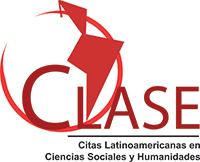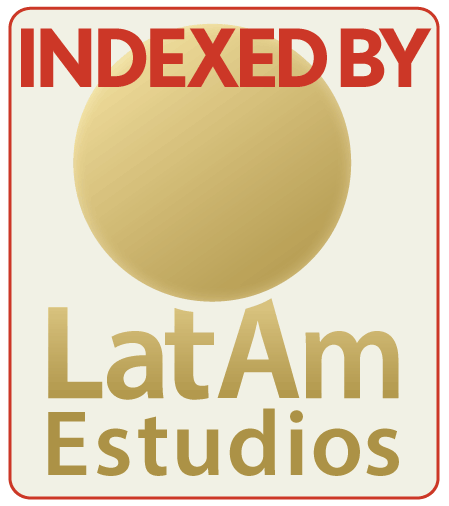Diego Muniz Barreto: the case of a second line like a first one
To victory, always
DOI:
https://doi.org/10.24215/23139048e026Keywords:
Politics, Second lines, Trajectory, PeronismoAbstract
We present the political itinerary of Diego Muniz Barreto in Argentina (1953-1977). From an economically well-off family, he made his first weapons within anti-Peronism. Then he was an official in the government of Onganía, he forged contacts with the unions, strengthened ties with high command of the Army, approached the Argentine Youth for National Emancipation, the Peronist Youth, Montoneros, the People's Revolutionary Trend, the People's Revolutionary Army, was a National Deputy, expelled from the Justicialist Party, and killed by the military dictatorship.
Downloads
References
Annicchiarico, C. (2014). El horror en el banquillo. Análisis del genocidio argentino. 1. Campo de Mayo (Juicios I a IX). Ciudad Autónoma de Buenos Aires, Argentina: Colihue.
Acha, O. (noviembre de 2010). Los orígenes olvidados de la Juventud Peronista: la protohistoria de un mito argentino. Trabajo presentado en el Segundo Congreso de Estudios sobre el Peronismo (1943-1974). Universidad Nacional de Tres de Febrero, Argentina.
Alaniz, R. (25 de abril de 2012). Rodolfo Ortega Peña y las Tres A. El Litoral. Recuperado de http://www.ellitoral.com/index.php/diarios/2012/04/25/opinion/OPIN-04.html
Baschetti, R. (2013). Documentos de la guerrilla peronista. Ciudad Autónoma de Buenos Aires, Argentina: De la Campana.
Caballero, R. y Larraquy, M. (2000). Galimberti. De Perón a Susana. De Montoneros a la CIA. Ciudad Autónoma de Buenos Aires, Argentina: Norma.
Dandan, A. (19 de noviembre de 2010). Sabíamos que iban a matarlo [Testimonio de Juana Muniz Barreto]. Página 12. Recuperado de: https://www.pagina12.com.ar/diario/elpais/1-157134-2010-11-19.html
Diez, R. (2000). Los compañeros. Ciudad Autónoma de Buenos Aires, Argentina: La Campana.
Gambini, H. (2008). La historia del peronismo. Tomo III. La violencia (1956-1983). Ciudad Autónoma de Buenos Aires, Argentina: Vergara.
Riverockperon (septiembre de 2015). Corto para la campaña del FREJULI año 1973. 2/3. Desde 0:11 a 1:24 min. Recuperado de: https://www.youtube.com/watch?v=0DKLcbq8aMg.
Roth, R. (1981). Los años de Onganía. Ciudad Autónoma de Buenos Aires, Argentina: La Campana.
Salas, E. (2005). El falso enigma del «caso Aramburu». Lucha Armada, (2).
Sebreli, J. J. (2002). Crítica de las ideas políticas argentinas. Ciudad Autónoma de Buenos Aires, Argentina: Sudamericana.
Seminara, L. (2014). Representaciones y discursos políticos en «Montoneros Sabino Navarro». Una aproximación desde los márgenes. Sociohistorica, (34). Recuperado de http://www.sociohistorica.fahce.unlp.edu.ar/article/view/SH2014n34a04
Vignollés, A. (2011). Doble condena. La verdadera historia de Roberto Quieto. Ciudad Autónoma de Buenos Aires, Argentina: Sudamericana.
Published
How to Cite
Issue
Section
License
Copyright (c) 2019 Adrián Nicolás Pérez

This work is licensed under a Creative Commons Attribution-NonCommercial-ShareAlike 4.0 International License.
The acceptance of an original by the journal implies the non-exclusive transfer of the economic rights of the authors in favor of the editor, who allows reuse, after editing (postprint), under a Creative Commons Attribution License -NonCommercial-ShareAlike 4.0 International (CC BY-NC-SA 4.0)
In accordance with these terms, the material can be shared (copied and redistributed in any medium or format) and adapted (remixed, transformed and created from the material another work), provided that a) the authorship and original source of its publication (magazine and URL of the work), b) is not used for commercial purposes and c) the same license terms are maintained.
The transfer of non-exclusive rights implies that after its publication (postprint) in Cuadernos de H ideas the authors can publish their work in any language, medium and format; in such cases, it is requested that it be stated that the material was originally published in this journal.
Such assignment also implies the authorization of the authors for the work to be harvested by SEDICI, the institutional repository of the National University of La Plata, and be disseminated in the databases that the editorial team considers appropriate for increase the visibility of the publication and its authors.
Likewise, the journal encourages the authors so that after their publication in Cuadernos de H ideas they deposit their productions in other institutional and thematic repositories, under the principle that offering society scientific and academic production without restrictions contributes to a greater exchange of global knowledge.










.png)

























